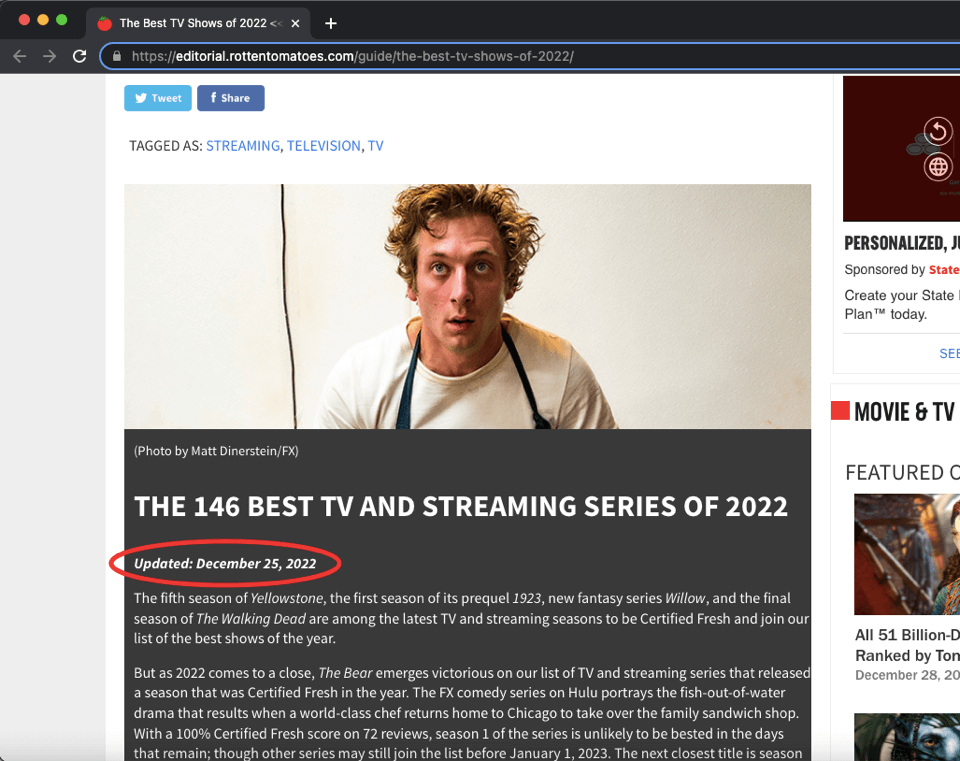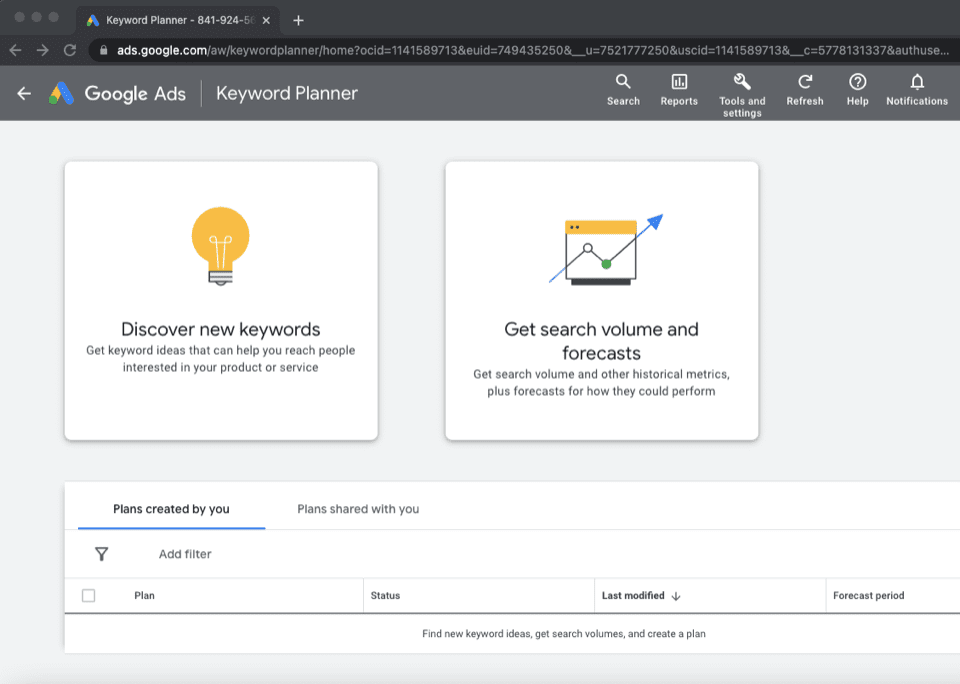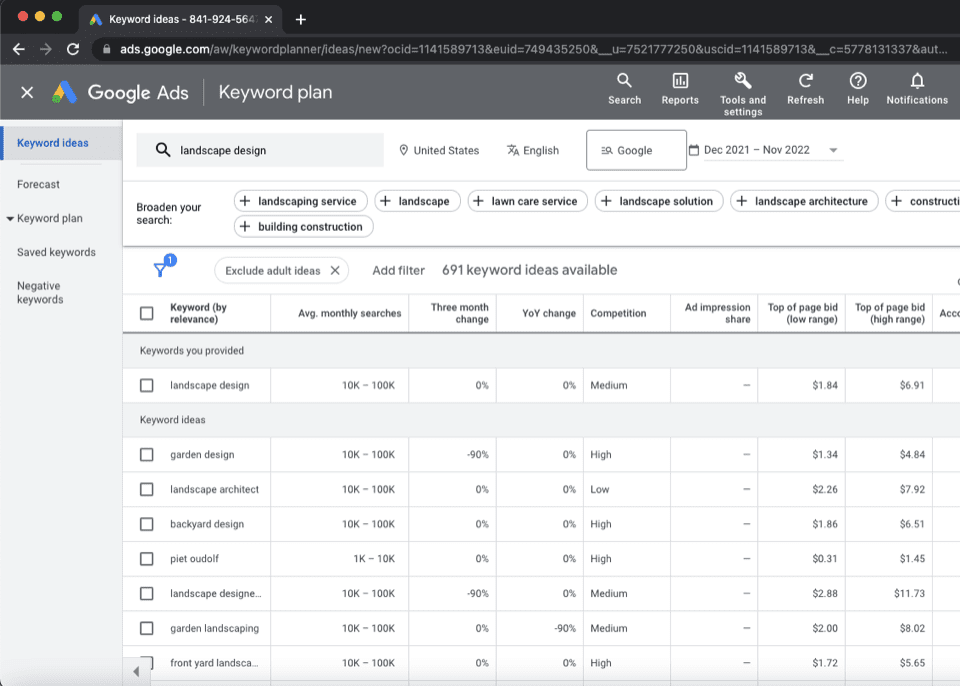Optimizing your website is an ongoing process — not something you just do once. If it’s been a few months (or years!) since you’ve conducted a thorough search engine optimization (SEO) analysis, it may be time to give your site a tune-up.
Making continuous SEO improvements helps your business keep an edge over the competition. Here’s everything you need to check and improve your website’s optimization in 2023.
Table of Contents
- 1 SEO Analysis Checklist
- 2 Need Help with Your Website’s SEO Analysis?
SEO Analysis Checklist
Start with the diagnosis. What’s working well? What isn’t?
Conducting an SEO audit of your website gives you a big-picture idea of its overall health. An audit identifies issues that may negatively impact your domain’s performance in search engine result pages (SERPs) such as broken links, error pages, slow site speed, and more. This type of SEO analysis primarily looks at on-page SEO factors, which include all the metrics of your domain that you can control or “tweak” to increase your chances of achieving high rankings.
Checking your website optimization isn’t a one-time process. Google updates its algorithms thousands of times a year, so be proactive and review the items on this SEO Analysis checklist frequently to stay competitive.
1. Utilize SEO Analysis Tools and Plugins
To begin your website’s SEO analysis, take advantage of tools designed to check your website’s optimization. These tools perform a quick and thorough audit of your domain, addressing many of the points discussed in this guide. Many of these tools are free with an option to pay for more advanced features.
For those whose websites are hosted on WordPress, SEMrush has a fantastic rundown of the best WordPress plugins. If your domain is hosted elsewhere, check out this list of free SEO tools by Ahrefs.
No tool can replace a human review of the site’s user experience, but it’s a good place to start.
2. Update SEO Content
One of the first steps of your SEO analysis is to review all the content on your website. Check landing pages, blogs, product pages, and informational pages for accuracy and relevancy. Maybe you have a product image that shows last year’s version or a blog with outdated references. If you notice it easily, your site’s users will too.
Google rewards domains that provide users with helpful content, so it is paramount that you keep all the details on your site up-to-date. Clean up old pages with expired or obsolete material and revise pages as products, practices, and information evolve.

See this principle in action in this editorial from Rotten Tomatoes, The Best TV Shows of 2022. Notice the update towards the end of 2022 to ensure that it included all the latest info as the year came to a close.
Maintaining a website that users trust translates to positive metrics like organic traffic, time spent on page, and number of pages visited. Those metrics then boost a site’s perceived authority in Google’s algorithm. In the screenshot below, notice which page earned the #1 spot for the query “best tv shows 2022.”

3. Update and Optimize URLs
As you continue your SEO analysis, some URLs may require an update to reflect current information. However, existing URLs have already been indexed, received traffic, and found their way to users’ inboxes or bookmarks. When you update a page’s URL, clicking the original links will dead end at a 404 – page not found error. This can seriously hurt your SEO performance. To prevent broken links, apply an appropriate redirect (such as a 301 permanent redirect) each time you update pages, site organization, or URLs.
To quickly and easily find broken URLs on your website, try using this free broken link checker tool from Ahrefs.

As you update your URLs, make them as short, simple, and descriptive as possible. Doing so will quickly and clearly tell users where they are on your website. Not only does this make it easier for search engines to crawl your website, but it increases visitors’ trust in you and contributes to a positive user experience (UX) on your site.

4. Keyword Optimization
A keyword is the term or phrase used in an internet search to find a service, product, or other information. Google uses keywords to inform its decisions about which domains should appear — and how high — on the SERP for a particular query. Without the appropriate keywords, you are invisible to people searching the web for sites like yours. Therefore, checking your website’s keyword optimization should be one of the highest priorities of your SEO analysis.

One of the best tools you can use to improve your keyword strategy is Google Keyword Planner. This tool allows you to research the keywords you should target on your website. Start with the keyword that seems most relevant to the services or goods that you provide (e.g., landscaping, dog training, healthy recipes, etc.) and enter it into the Google Keyword Planner to find additional related words that will capture more searches.

Use this tool to determine which words have high search volume and relatively less competition, giving you a better chance to rank for them. Other resources with similar capabilities include Google Search Central, Ahrefs, and SEMrush.
Spend time experimenting with these tools and their features. Each one may give you slightly different data and suggestions for your keyword strategy, helping you create a solid, well-rounded plan. Once you have a list of strong keywords, use them as a guide for creating and updating content on your site.
Pay attention to keyword frequency. While there is no official standard for how often a primary keyword should appear on a page, the widely accepted rule of thumb is once per 100-200 words. Avoid blackhat SEO hacks like keyword stuffing, which is the practice of cramming as many keywords onto a page as possible without regard for readability or user experience. Doing this will not benefit your search engine rankings.
5. Core Web Vitals
Another important step in your SEO analysis is to check your Core Web Vitals, which are a set of criteria Google uses to define the quality of your website’s user experience. Core Web Vitals are primarily concerned with your site pages’ load and response times, as well as how much the elements on your pages “shift” as they load. Every internet user knows the frustration of trying to navigate a website that performs poorly in these areas — and that frustration has consequences. According to Google, a visitor who is dissatisfied with their experience on a website is 62% less likely to return.
Prevent these problems on your website by optimizing image sizes, removing unnecessary plugins, and checking for other common speed issues that may bog it down.
Google Analytics is a great resource for checking website optimization, including the factors used to measure Core Web Vitals. In addition to measuring your overall site speed, you can also see the loading times of individual pages and get insights on improving problem areas.
6. Crawl Depth
One factor to consider as part of your SEO analysis is your crawl depth, which refers to the number of clicks required for users to access different pages on your site. When calculating crawl depth, start with the homepage (0) and count the number of clicks it takes to get to the page in question (1, 2, 3…). Users prefer to find the information they need with as few clicks as possible.
Your crawl depth can also affect the way that search engines index your website. In terms of importance, search engines consider the homepage to be top priority. Pages farther away from the homepage — or at greater crawl depth — are assigned the smallest priority and may not be crawled at all. These pages are very unlikely to rank.

This is one of the reasons why many sites use massive dropdown menus to help visitors navigate. This keeps the crawl depth optimal and gets users closer to a conversion very quickly. Keep crawl depth in mind as you check your domain’s optimization and continue adding content. Don’t add pages without a strategy to maintain ideal crawl depth. To facilitate crawling and provide the best user experience, aim for a depth for 5 clicks or less.
7. SEO Linking Strategy
Checking website optimization for internal links — or links between the pages of a single website — is a simple way to boost your SEO performance. These links are the pathways that search engines use to crawl domains, understand their structure, and see the relationships between their pages. This allows search engines to index your site more quickly. Without internal links, some pages may go “undiscovered” by search engines, so creating an internal linking strategy as part of your SEO analysis is vital.
Linking to other relevant pages within your website also directs users to helpful information that may be useful to their search. The more internal links they follow, the more time they spend browsing your site. Increased time on page and/or site tells Google that your website is relevant and trustworthy, which can help to boost your rankings in SERPs.
Another beneficial way to use internal linking is to share a page’s authority with other pages in your domain. As you continue checking your website optimization, look for pages that are performing well in SERPs and other metrics like bounce rate and time on page. Inserting links from pages with higher authority to those with lower scores gives some of your lower-ranking pages an authority boost.
This same strategy also works with external links — or links between two different websites. Linking to relevant, high-authority websites increases the authority of your own domain. Keep in mind that this only works if the pages you link to are relevant and helpful to your users. If you manage to get a backlink to your website from another high-authority domain, the benefits are even greater. Improve your chances of getting these kinds of links by providing high-quality, useful content on your site.
8. Update Your Sitemap
A sitemap is exactly what it sounds like — a directory for your domain with a comprehensive list of all the pages users may want to visit. Unless a website is very small or isn’t updated very frequently, every site should have a sitemap. Sitemaps help search engines crawl your website more efficiently and can be used to tell Google which of your pages are most important.
More than likely, you already created a sitemap when you built your website. As you continue to generate new content and create new URLs, consider updating your sitemap to facilitate the indexing of new pages. Some web hosting services and SEO analysis tools do this automatically. For a detailed walkthrough of submitting a new sitemap, check out the Google Search Console sitemap guide.
9. Target Search Intent
The major focus of all your SEO analysis and optimization efforts should be search intent. As you make updates, create content, and implement keywords, ask yourself if these changes match the intent of the searches you’re working to capture. Here are a few things to consider:
Who is your target demographic?
Knowing the group of people you’re targeting is the first step to understanding their intent when conducting an internet search. What kind of people are interested in the service your domain has to offer? If your industry is restaurant supplies, you’re probably not targeting frequenters of fast food chains.
What are the needs of your target audience?
What are their concerns? How can your website meet their needs? Someone looking for restaurant supplies may want to know more about the benefits of cast iron versus stainless steel cookware, or silicone utensils versus wood.
What do different keywords suggest about searchers’ intent?
Which pages should be optimized to match specific search queries? If a searcher types “best dutch oven” into a search engine, they are likely in the research phase of a product search and not ready to make a purchase, so a comparative blog post would be a great way to rank for this keyword. However, if “Le Creuset 5.5 Quart Dutch Oven” is the search term, you can safely assume the user has made a choice and is looking for a product page.
Google Analytics has many metrics to help you identify your target demographic and see how users are already interacting with your website. Understanding user behavior metrics and key performance indicators (KPIs) like click-through rate, bounce rate, conversion rate, and others help you to pinpoint what you’re doing well and where you can still improve. All the technical tweaking aside, making your website a beneficial resource to your users is an essential guiding principle for all your SEO analysis and website optimization checks.
Need Help with Your Website’s SEO Analysis?
Search engine optimization is a complex task governed by constantly changing metrics and data. The time, effort, and knowledge required to do it well can feel overwhelming, especially if you’re new to SEO analysis. Checking your website optimization and building its SEO muscle is the key to generating good quality leads and capturing conversions. Coalition Technologies has the expertise to perform a thorough audit of your website and give you clear, actionable recommendations. If you need help tackling items in this checklist, Coalition Technologies is ready to help you succeed. Talk to an expert to get started today.


